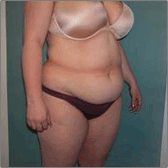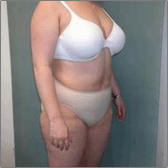

Liposuction is a surgical procedure that can help sculpt the body by removing unwanted fat from specific areas, including the abdomen, hips, buttocks, thighs, knees, upper arms, chin, cheeks and neck. The most basic techniques are tumescent liposuction, ultrasonic liposuction, and power-assisted liposuction. Although no type of liposuction is a substitute for dieting and exercise, liposuction can remove stubborn areas of fat that don't respond to traditional weight-loss methods.
Tumescent liposuction involves injecting large volumes of a saline solution beneath the skin and around the areas of fat where liposuction is needed. Then, a canula is placed through a small incision on the skin to remove the fat. The canula is connected to a vacuum machine and the surgeon moves the canula back and forth. This removes the fat which is deposited into a jar.
Ultrasonic liposuction uses ultrasonic energy which is directly applied to the fat cells under the skin. This converts them to a less dense liquid form that is easier to remove.
Power-assisted liposuction involves using a special canula that uses tiny, rapid vibrations to break up fat cells so they can be easily suctioned out. The surgeon is able to better control the canula resulting in more precise and thorough fat removal.
Upon completion of the procedure, some surgeons partially suture the incisions as a large amount of fluid will need to drain. Others leave the incisions open for 1 -2 days allowing for drainage. After 1-3 days, small adhesive bandages are sufficient.
Recovery time: 5 to 7 weeks. After surgery, compression garments are used to allow the skin to contract to the new contour and are worn from 4-6 weeks.